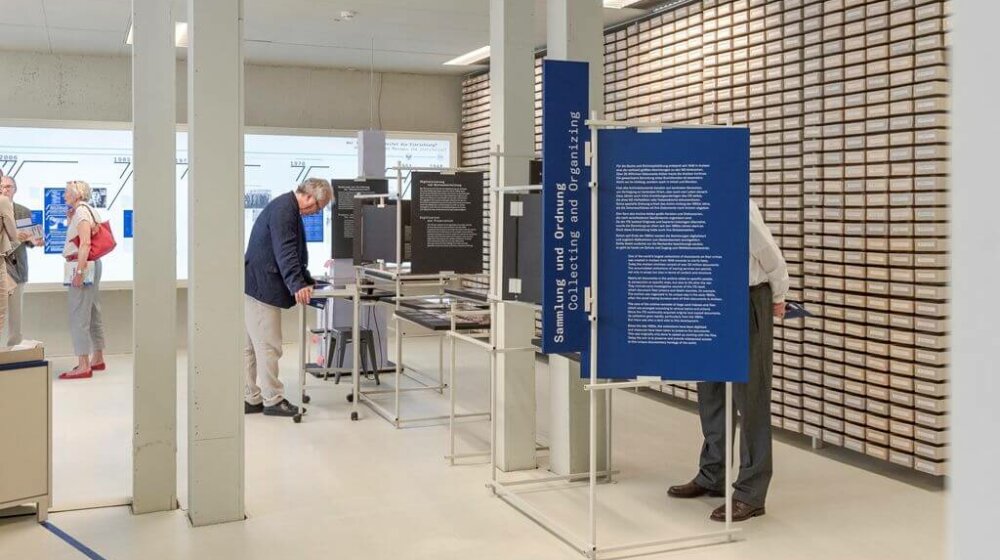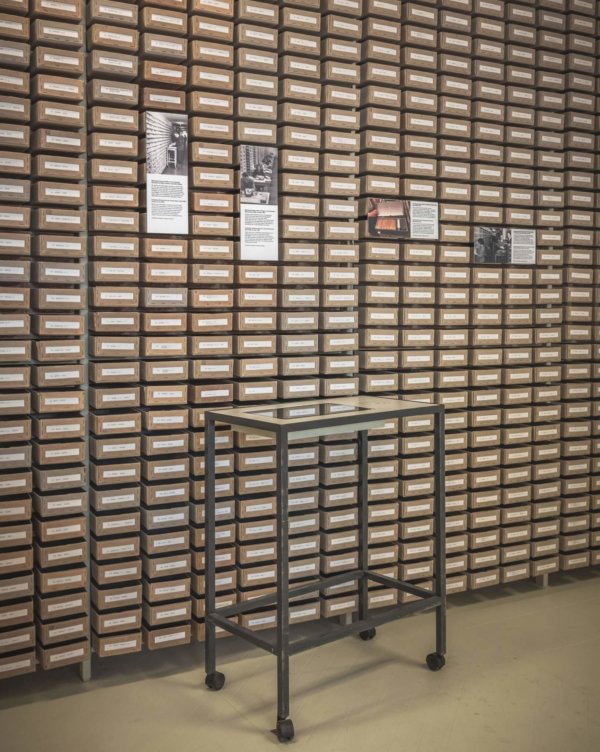New permanent exhibition shows the history of the Arolsen Archives

What brought the most comprehensive archive on the victims and survivors of Nazi persecution to Bad Arolsen? How was the search for missing persons organized from 1945 onwards? And what kind of information are people looking for today? With their new permanent exhibition, “A Paper Monument”, the Arolsen Archives give visitors a look behind the scenes at the work they have been doing for the past seven decades to trace missing persons and document National Socialist crimes.
The exhibition uses the fates of a number of individuals to explain where the documents came from, how they were archived and how they finally came to be recognized as part of the world’s documentary heritage by UNESCO. In addition, it shows how the millions of tracing inquiries sent to the institution have themselves become a valuable resource documenting the consequences of Nazi tyranny. Changes in the way historical testimony and the victims of National Socialist crimes are treated are also highlighted in the exhibition. The name chosen for the exhibition, “A Paper Monument”, harks back to words spoken by Thomas Buergenthal, a Holocaust survivor, underlining the value of the archive as a place of truth and remembrance.

»Facing up to the Holocaust and coming to terms with it is part of our identity, it is non-negotiable.«
Monika Grütters, German Minister of State for Cultural Affairs (until November 2021)
“The exhibition shows the work of an institution which is one of a kind and which bears a unique responsibility”, commented the institution’s Director, Floriane Azoulay, at the opening on 18 June 2019. “In view of the current tide of nationalistic and anti-Semitic sentiment, the Arolsen Archives need to play an active role in society today and take up a position which is commensurate with the importance of their holdings: standing alongside partners such as Yad Vashem in Israel and the United States Holocaust Memorial Museum in the USA”.
In the speech she gave at the exhibition opening, the German Minister of State for Cultural Affairs, Monika Grütters, also highlighted the importance of the institution for society as a whole: “The exhibition shows very vividly how the Arolsen Archives reunited people or clarified their fates in the aftermath of the terrible crimes committed by the National Socialists. This task remains important today because subsequent generations have a deep-seated need for certainty. Facing up to the Holocaust and coming to terms with it is part of our identity, it is non-negotiable. Because the holdings of the Arolsen Archives bear testimony to both the shocking extent and the cold-blooded systematic nature of the crimes committed under National Socialism, the German government supports the ongoing transformation of the institution into an archive which is open to all who are interested.”
Informative presentation of a huge archive
At the heart of the exhibition is a 26-metre-long installation showing a small part of the Central Name Index. Nowadays, the Central Name Index is packed in state-of-the art archive boxes. It comprises a total of about 50 million index cards, which contain information on the fate of 17.5 million people. Visitors to the exhibition only see a fraction of the whole: the Central Name Index used to be kept in 21,000 boxes and 4,500 of these original card index boxes are now on display. Before digitization, it was the most important tool used in the search for information on the victims of the Nazis and it functioned as a key to the documents. The enormous dimensions of the archive are also illustrated by three tall paper towers which show how high the individual collections would be if the documents were stacked on top of each other. Their heights are shown in relation to well-known buildings and the highest mountains in Germany and Europe. Animated films explain the work of the institution to visitors. They show the search for a Soviet forced laborer or the information provided for a compensation claim filed by a Holocaust survivor, for example.

The installation showing a small part of the Central Name Index is at the heart of the exhibition.
A critical examination of the institution’s history
With a focus on „openness versus isolation“, the Arolsen Archives finally turn their attention to their own history in the context of social and political debate on National Socialism. One example of this is a collage made up of newspaper articles showing why the institution came under strong criticism from the mid-nineties on: the documents were not accessible to researchers and the inquiries submitted by victims of persecution were processed too slowly. International protests led to the archive being opened and to the complete restructuring of the institution at the end of 2007.
The exhibition is now open to visitors
The exhibition is now on in Bad Arolsen and is accommodated in a former department store in Schloßstraße 10, not far from the town’s baroque palace. It is open to visitors from Tuesday to Saturday from 2 pm to 5 pm. Admission is free. Guided tours for individual visitors are held in German on every first Wednesday of the month at 2 pm and in English on every first Tuesday of the month at 2 pm. If you are interested in taking part in one of these tours, please register at visitorgroup(at)arolsen-archives.org. Guided tours are also provided for groups. To arrange a group tour, please send a request to the same address.
About the Arolsen Archives
The Arolsen Archives are an international center on Nazi persecution with the world’s most comprehensive archive on the victims and survivors of National Socialism. The collection has information on about 17.5 million people and belongs to UNESCO’s Memory of the World. It contains documents on the various victim groups targeted by the Nazi regime and is an important source of knowledge for society today.

